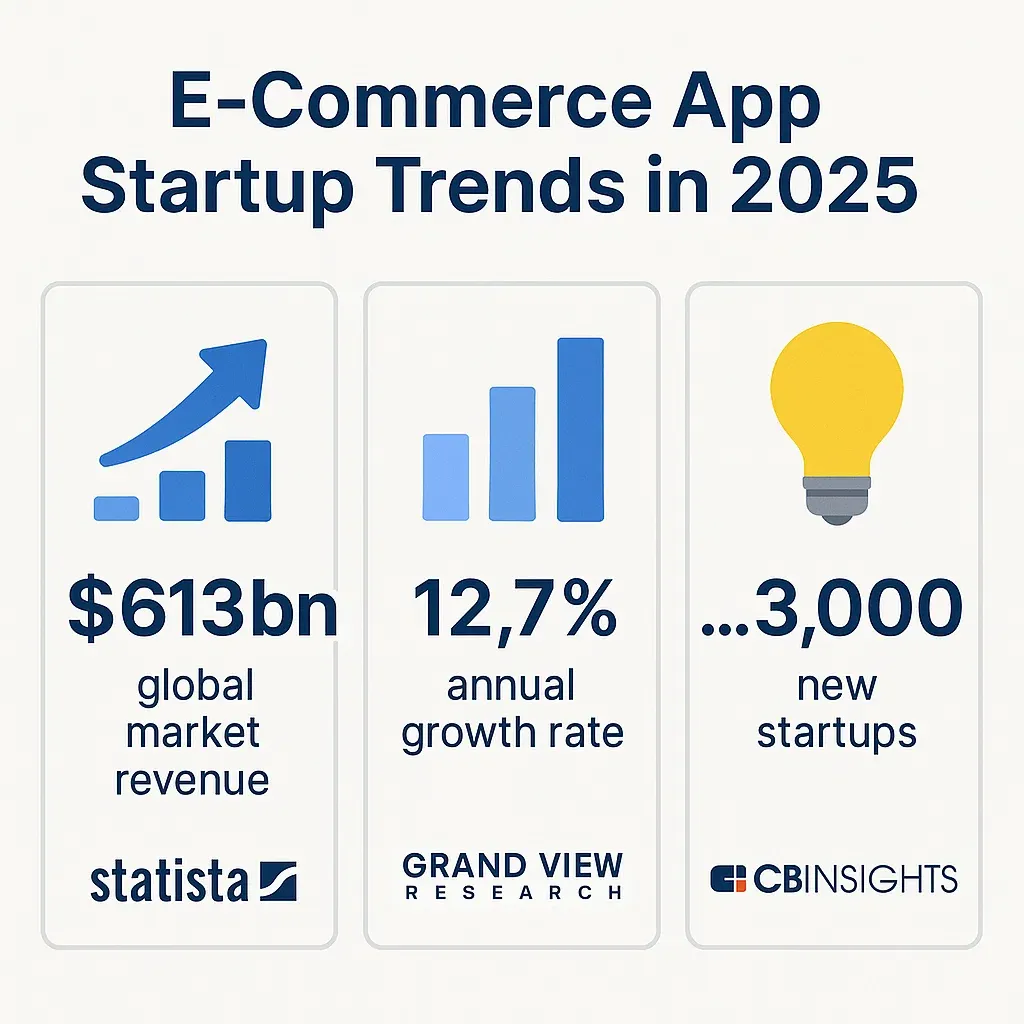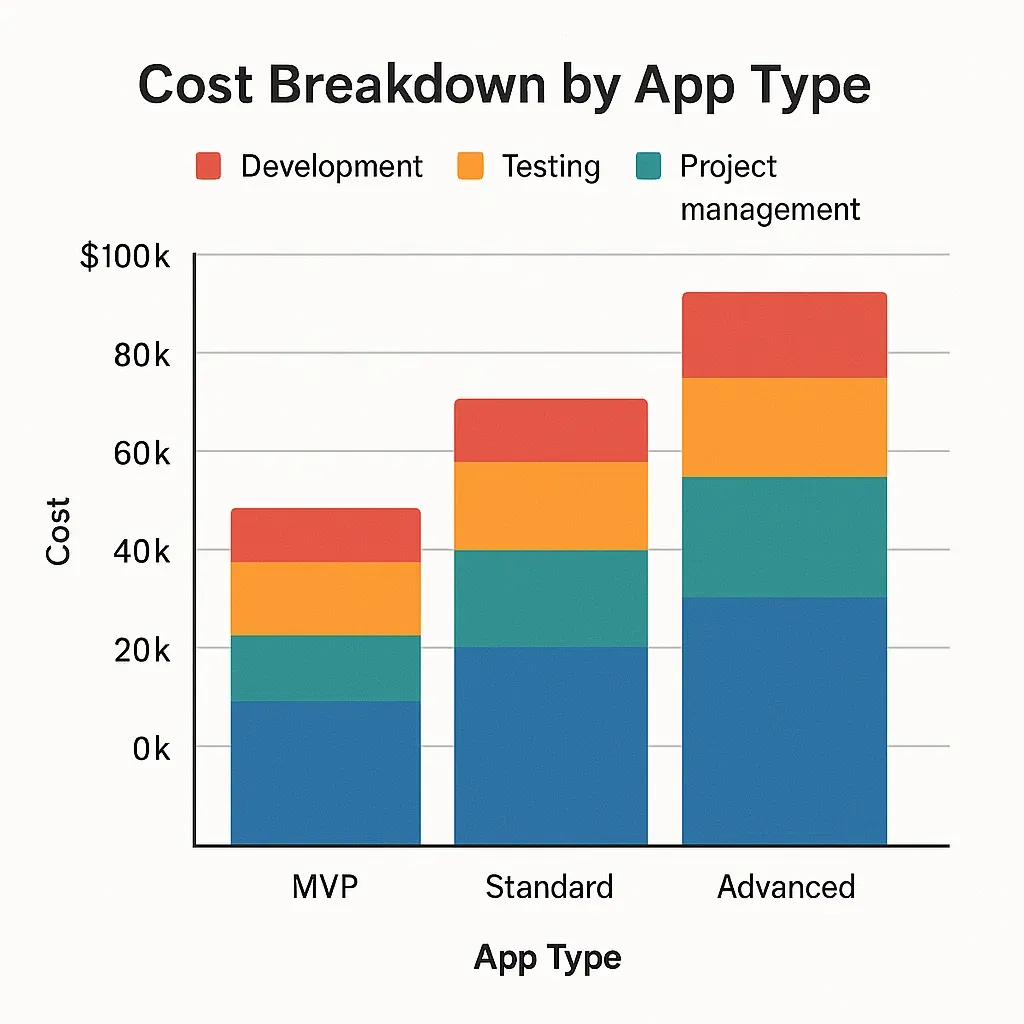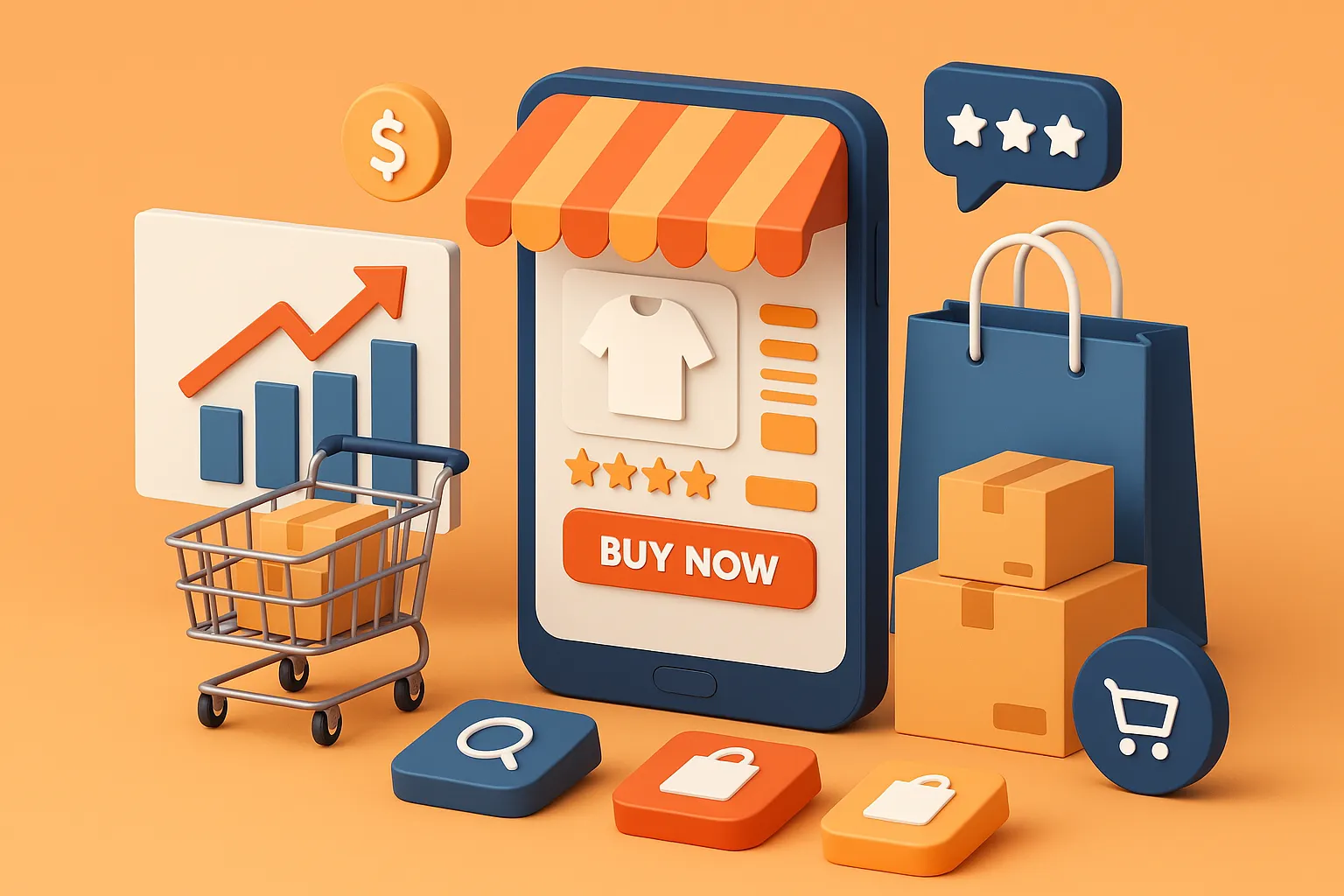2025 is already shaping up to be a transformative year for e-commerce. With consumer habits evolving faster than ever and digital shopping becoming the norm across demographics, the opportunity for launching a profitable e-commerce app is ripe for the taking. Whether you’re a startup founder, a solo entrepreneur, or a digital agency scouting your next venture, the e-commerce vertical presents a fertile landscape for scalable, revenue-rich app models.
In this blog, we’ll dive into why e-commerce app startups are gaining momentum in 2025, unpack data-driven trends that support the gold rush, and reveal high-potential app ideas that can earn you a seat at the top. You’ll also learn what makes these apps profitable, how much they cost to build, and why clone app development — especially with white-label solutions from Miracuves — is the smartest path forward.

Why E-commerce Apps Are a Hot Opportunity in 2025
The global e-commerce market is projected to surpass $7.5 trillion by 2025, with mobile commerce (m-commerce) driving over 72% of total sales. According to Statista, the average consumer now spends over 4 hours daily on mobile apps, and a significant portion of that time is dedicated to online shopping.
Venture capital funding in e-commerce tech startups is also on the rise, with over $60 billion invested globally in 2024 alone (CB Insights). Add to that the integration of AI, AR-powered product previews, and embedded fintech tools — and you’ve got a cocktail of tech enablers pushing the limits of what’s possible.
Moreover, major gaps still exist in niche markets such as hyperlocal delivery, secondhand product trading, and vertical-specific marketplaces. Entrepreneurs who step in with the right product-market fit can capitalize on early-mover advantage.
Top Profitable E-commerce App Ideas to Launch in 2025
1. Niche Product Subscription Boxes
Catering to hyper-targeted audiences, these apps deliver curated products like artisanal snacks, self-care items, or pet treats on a recurring schedule. With predictable monthly income and low churn rates, they’re a goldmine for long-term growth. Ideal for founders seeking steady revenue and loyal communities.
Monetization Strategy: Monthly/quarterly subscription tiers, upselling, affiliate integrations
Why it works in 2025: Consumers love convenience and personalization. Plus, predictable income and loyal user bases make this a scalable model.
2. Hyperlocal Grocery & Essentials Delivery
These location-specific apps fulfill immediate needs by delivering fresh groceries, essentials, and personal care items from neighborhood stores. With urban consumers craving faster, localized services, this model thrives on speed, convenience, and vendor inclusivity.
Monetization Strategy: Delivery fees, premium memberships, featured listings for local vendors
Why it works in 2025: Urban consumers value time over price. Hyperlocal platforms meet that demand while creating opportunities for local sellers.
3. Social Commerce Platforms
Blending e-commerce with influencer marketing, social commerce apps allow users to shop products directly from creator content. Perfect for Gen Z and millennials, they convert engagement into instant sales, creating a trust-driven shopping experience.
Monetization Strategy: Commission on sales, brand partnerships, premium creator tools
Why it works in 2025: Gen Z and millennials trust peer recommendations more than ads, driving conversion through creator-led content.
4. Secondhand & Sustainable Goods Marketplace
Eco-conscious buyers are driving demand for platforms that support resale and reuse. These apps enable users to buy and sell pre-loved items, offering affordability, sustainability, and profit—all in one purpose-driven platform.
Monetization Strategy: Transaction fees, listing boosts, membership perks
Why it works in 2025: Eco-conscious consumers are looking for platforms that align with their values while saving money.
5. Personalized Gift & Event Planning Storefronts
From last-minute gifts to themed party supplies, these apps solve real-time needs with tailored offerings. Built for high seasonal demand, they shine during holidays, birthdays, and wedding seasons with custom bundles and timely delivery.
Monetization Strategy: Dynamic pricing during peak seasons, custom add-ons, delivery margin
Why it works in 2025: Time-pressed shoppers want convenience and creativity in one app, especially during holidays or celebrations.
6. B2B Wholesale Marketplaces
Connecting small retailers with bulk suppliers, these apps streamline procurement for various industries. They reduce middlemen costs, offer better margins, and digitize the traditional wholesale process, unlocking enormous potential in untapped B2B segments.
Monetization Strategy: Commission per order, premium seller memberships, in-app financing
Why it works in 2025: Digitizing B2B commerce is still in early stages. There’s vast room for innovation and trust-building tech.
7. Augmented Reality Shopping Apps
These apps let users try products virtually—be it eyewear, furniture, or home décor—before purchasing. With AR reducing returns and increasing conversion rates, this tech-first model enhances customer confidence and shopping delight.
Monetization Strategy: Product placement fees, AR ad formats, upselling
Why it works in 2025: Immersive experiences reduce return rates and boost buyer confidence — a win-win for both consumers and brands.
What Makes an App Profitable in the E-commerce Niche?
Not every e-commerce app becomes a success story. The most profitable ones share a few critical traits that increase retention, revenue, and brand value while keeping operational costs in check.
1. Recurring Revenue Models
Apps with built-in repeat purchases — like subscriptions, memberships, or auto-reorder options — maintain steady cash flow and lower customer acquisition pressure.
2. High Retention and User Engagement
Loyalty programs, personalized recommendations, and push notification strategies improve user stickiness. Retention directly impacts long-term profitability.
3. Low Operational Overhead
By leveraging automation, third-party logistics (3PL), and digital wallets, successful apps keep their overheads low while maximizing service delivery.
4. Efficient Customer Acquisition
Affiliate programs, social proof, influencer-led marketing, and SEO-friendly catalogues allow apps to scale user acquisition without blowing the budget.
5. Fast Time-to-Market with Clone Solutions
Building from scratch is expensive and time-consuming. Clone app development allows startups to enter the market faster, test quicker, and pivot easily. Miracuves offers white-label clone solutions modeled after proven e-commerce platforms — making it easier to launch with minimal risk.
Cost to Build an E-commerce App in 2025
The cost of developing an e-commerce app in 2025 depends on various factors, but here’s a general estimate:
- Basic App (MVP): $8,000 – $15,000
- Mid-Level App: $15,000 – $30,000
- Advanced Custom App: $30,000 – $100,000+
Key Cost Drivers:
- Platform Type: Android, iOS, Web, or cross-platform
- UI/UX Design Complexity: Basic themes vs. customized branding
- Backend Architecture: Order management, inventory sync, live tracking, etc.
- Third-party Integrations: Payment gateways, CRM, marketing tools
- Features: AR preview, real-time chat, loyalty programs, admin dashboards
By choosing a clone app from Miracuves, you can slash your time-to-launch by 60% and reduce costs by up to 70%, while still enjoying full customization.

Tips for Founders to Launch a Successful E-commerce App
1. MVP-First Approach
Build a minimum viable product with just the core features to validate your business idea fast. Save advanced features for future iterations.
2. Focus on Exceptional UI/UX
Users expect smooth onboarding, intuitive design, and delightful browsing. Don’t overlook the importance of UX in driving conversions.
3. Market Validation Is Key
Run early ad campaigns, collect waitlists, or validate via a landing page. Understand your niche before investing in full development.
4. Scalable Infrastructure
Your backend should handle traffic spikes, order flow, and data security with ease. Scalability isn’t optional; it’s foundational.
5. Invest in Post-Launch Growth
Plan for post-launch strategies — email flows, influencer outreach, customer reviews — from day one. Growth doesn’t happen by chance
Conclusion
The e-commerce boom is far from over — in fact, it’s evolving faster than ever. From niche subscription boxes to B2B marketplaces and social commerce, the opportunities in 2025 are abundant and backed by real demand. As a founder or agency, your success hinges not just on what app you build, but how fast and efficiently you bring it to market.
And that’s where Miracuves shines. With its ready-made, fully customizable clone app development solutions, you can skip the dev headaches and launch a profitable e-commerce app for entrepreneurs quickly and confidently.
At Miracuves, we help innovators launch high-performance app clones that are fast, scalable, and monetization-ready. Ready to turn your idea into reality? Let’s build together.
FAQs
Q:1 How much does it cost to build an e-commerce app in 2025?
Anywhere between $8,000 to $100,000+, depending on complexity and platform choices.
Q:2 What features should a successful e-commerce app include?
Search & filters, real-time tracking, secure payments, push notifications, ratings, and admin dashboards.
Q:3 Is it better to build from scratch or use a clone solution?
For speed and cost-efficiency, clone solutions like those from Miracuves are the better choice for most startups.
Q:4 Can I customize a clone app from Miracuves?
Absolutely. All white-label clone apps from Miracuves are fully customizable to match your branding and business logic.
Q:5 How long does it take to launch a clone-based e-commerce app?
Typically 2–4 weeks, compared to 4–6 months for apps built from scratch.
Q:6 Do clone apps support scaling to millions of users?
Yes — Miracuves designs clone solutions on robust, scalable architecture ideal for high-growth businesses.
Related Articles:








